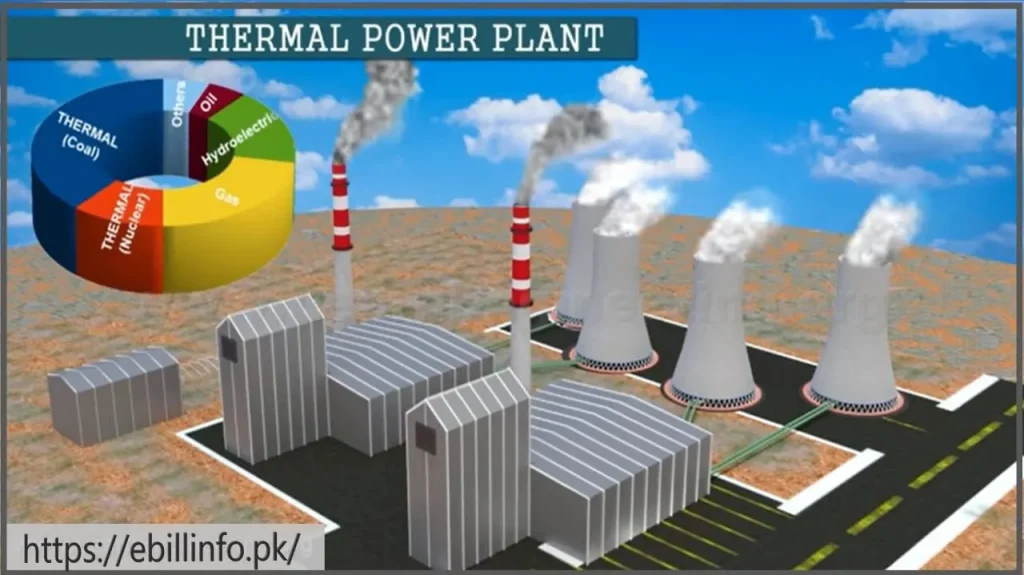Sources of Electricity Generation
History of Electricity in Pakistan
Discuss sources of electricity generation in detail. After the independence of Pakistan in 1947, at that time, Pakistan had a 60MW power generation capacity because the consumption of electricity was stubby. The Government couldn’t depend on that production because it wasn’t enough to fulfill the demand and needed to expand its generation.
Water and Power Development Authority
The Government of Pakistan decided to grow up the production of electricity. In this regard, it decided to establish WAPDA in 1959. The main objectives behind establishing water and power development authority were electricity generation, transmission, and distribution. The production was increased from 60MW to 119MW.
During the 1960s, the country was growing up rapidly. Every sector made new records of its progress, and WAPA also decided to install new power plants and projects to sustain the demand of load and able to increase electricity generation capacity from 119 MW to 636 MW in a short period of 5 years and increase sources of electricity.
These efforts were not stopped, and they tried to grow up day by day. In the 1970s, WAPDA produced electricity from 636MW to 1331MW because the Mangla Dam was built and other projects started functioning. You can check your fesco bill online with in single click through ebillinfo.pk
Pakistan Atomic Energy Commission
In the 1960s, Pakistan instigates to start of work on atomic energy. The Pakistan Atomic Energy Commission (PAEC) aims to generate electricity. The first small atomic power plant water reactor started working in 1972, generating 137MW power. The Government works day and night to produce more electricity because the demand is increasing daily. In 1991 Pakistan was able to produce 7000MW of electricity.
National Electric Power Regulatory Authority
In 1997 Pakistan decided to establish a power authority named NEPRA stands for National Electric Power Regulatory Authority which looks after the issues of investors, decides unit tariffs, and resolves the issue of electric consumers. The main role of NEPRA is to regularize the private power sectors and control electric generation and transmission license issuing. All private power companies work under NEPRA’s act, rules and regulations.
Independent Power Producers (IPPs)
In 1997 the Government of Pakistan took another initiative to overcome the shortfall of electricity because the energy demand was rising daily, but production was not increasing. At that government was facing so many challenges due to this was not able to establish so many new power plants. Then to overcome that shortfall government decided to invite independent investors to establish new power plants to escalate power generation.
National Transmission and Dispatch Company
NTDC, National Transmission, and Dispatch Company were initiated in 1998. NTDC has rights to property and operation and started to manage 12 500KV and 29 220KV grid stations. These grid stations cover a large area of the population 500KV station cover 5187 km, and a 220KV station cover 9687 km of transmission lines.
Sources of Electricity in Pakistan
Hydro Power Plant – Hydro Electricity
The process of converting mechanical energy by moving water to electrical energy is called hydropower. Producing energy from the water was discovered in the 19th century in Nigeria, a city in Canada. In 1879 initially, that power was used in street lumps. The electricity generation from water is very effective and produces more power in less time. For that needed three main things, one is a power station for electricity generation, a dam to control the flow of water and the third thing is a reservoir to stock water.

There are two methods to produce electricity by Hydropower Plant
- Dam
- Run of River
In the hydroelectric power generation method, water flows through a pipe and then spins the turbine blades after that generator starts working and produces electricity. Pakistan has a 10635MW hydroelectric capacity for power generation.
33 hydroelectric power plants are working in Pakistan, including Ghazi Bhrota, Mangla, and Tarbela Dams. Most of the power plants are installed on the bank of the Indus river and Jhelum river; some are on the bank of small canals. These power plants are producing 32074GWH, which is 34% of Pakistan’s total generation of electricity.
Electricity Power Pants in Pakistan
| Sr | Station | Location | Capacity (MW) | Working Year |
|---|---|---|---|---|
| 1 | Ghazi-Barotha | Attock, Punjab | 1450 | 2003 |
| 2 | Malakand-III | Malakand, KPK | 81 | 2008 |
| 3 | Khan Khwar, Pehur | Shangla, KPK, Swabi, KPK | 72, 18 | 2010 |
| 4 | Jinnah, Garam Chashma | Jinnah Barrage, Punjab, Chitral, KPK | 96, 1 | 2012 |
| 5 | Allai Khwar, Gomal Zam, Laraib Energy | Mansehra, KPK, South Waziristan, Jhelum River, AJ&K | 121, 17, 84 | 2013 |
| 6 | Duber Khwar | Kohistan, KPK | 130 | 2014 |
| 7 | Patrind Hydro | Muzaffarabad, Azad Kashmir | 147 | 2017 |
| 8 | Golen Gol, Neelum–Jhelum,Marala Hydro (PPDCL) | Chitral, KPK, Muzaffarabad, Azad Kashmir, Sialkot, Punjab | 108, 969, 8 | 2018 |
| 9 | Tarbela 4th Ext. | Tarbela, KPK | 1410 | 2019 |
| 10 | Gulpur Hydro | Gulpur, Azad Kashmir | 101 | 2020 |
| 11 | Daral Khwar, Ranolia | Swat District, KPK, Kohistan, KPK | 37, 17 | 2021 |
| 12 | Karot | AJK/Punjab | 720 | 2022 |
Advantages
- Hydroelectric power is a renewable source of energy.
- No greenhouse emission
- Relatively low-cost source of energy
Disadvantages
- Dams can affect the population of fish.
- Cause of the dry spell
Thermal Power Plant
Heat energy is converted into electrical energy in thermal power electricity generation. First, the water is heated to make steam this steam runs a turbine then the generator starts working for electricity generation. A condenser is used for the steam recycling process. 64 thermal power plants are working in Pakistan.

Advantages
- A most common and reliable source of energy
- Electricity can easily store and transport.
Disadvantages
- Produce greenhouse emission
- Expensive source of energy due to the increase in oil prices
Thermal power is divided into some categories as follows:
Fossil Fuels Energy in Pakistan
Fossil fuels generate electricity and use coal, oil, and natural gas. These things are burned to heat water and produce steam to run a turbine connected to the generator to generate electricity.
Biomass Energy in Pakistan
Electricity production through biomass technology is very suitable for Pakistan because our country is agricultural. Through this process, wood or other organic matter burns to produce steam to move a turbine connected to the generator to produce electricity.
Nuclear Power Plant
This method of electricity generation uses a nuclear reaction to produce heat that activates the turbine connected to the generator. In this way, nuclear energy is converted into electrical energy. The atomic energy commission of Pakistan is responsible for all operations of nuclear power plants and research. At this time, Pakistan produced 3% of its total electricity from nuclear power.

Nuclear Power Plants in Pakistan
| Sr | Station | Location | Capacity (MW) | Working Year |
|---|---|---|---|---|
| 1 | (CHASNUPP-1) | Mianwali, Punjab | 325 | 2000 |
| 2 | (CHASNUPP-2) | Mianwali, Punjab | 325 | 2011 |
| 3 | (CHASNUPP-3) | Mianwali, Punjab | 340 | 2016 |
| 4 | (CHASNUPP-4) | Mianwali, Punjab | 340 | 2017 |
| 5 | (KANUPP-2) | Karachi, Sindh | 1145 | 2021 |
| 6 | (KANUPP-3) | Karachi, Sindh | 1145 | 2022 |
Advantages
- Produce large amounts of energy with low pollution.
- No greenhouse emission
Disadvantages
- The production process is difficult.
- Produce radioactive waste
Wind Power Plant
The process of converting wind’s kinetic energy to electrical energy is called wind power. Wind turbines move through the pressure of air connected to the generator to produce electricity. Due to the increase in fossil oil, Pakistan pays to heed the new installation of wind power plants. Currently, Pakistan has 5 wind power plants producing 255.4MW of electricity.

Wind Power Plants in Pakistan
| Sr | Station | Location | Capacity (MW) | Working Year |
|---|---|---|---|---|
| 1 | Zorlu Enerji Pakistan (Pvt.) Ltd, FFC Energy | Thatta, Sindh | 56, 50 | 2013 |
| 2 | Three Gorges First Wind FarmCHASNUPP-2) | Thatta, Sindh | 50 | 2014 |
| 3 | Foundation Wind Energy – I, II, Sapphire Wind | Thatta, Sindh | 50, 50, 53 | 2015 |
| 4 | Yunus Energy, Metro Power Company, Gul Ahmad Wind, Master Wind Energy, Tenaga Generai | Thatta, Sindh | 50, 50, 50, 50, 50 | 2016 |
| 5 | HydroChina Dawood Wind Power, Sachal Energy Development, United Energy Pakistan Wind Power | Thatta, Sindh | 50, 50, 99 | 2017 |
| 6 | Artistic Wind Power, Act Wind (Tapal Wind), Hawa Energy, Jhampir Power, Three Gorges Second Wind Farm, Three Gorges Third Wind Farm | Thatta, Sindh | 50, 30, 50, 50, 50, 50 | 2018 |
| 7 | Tricon Boston Consulting-A, B, C, Zephyr Power | Thatta, Sindh | 50, 50, 50, 50 | 2019 |
| 8 | Master Green Energy Pvt Ltd, Master Green Energy Pvt Ltd, Din Energy Limited, Master Green Energy Ltd, Act 2 Din Wind Pvt Ltd, Artistic Wind Power Pvt. Ltd, Indus Wind Energy Limited, Lakeside Energy, Liberty Wind Power-1, Gul Ahmed Electric Limited, Liberty Wind Power-II (Pvt.) Ltd, NASDA Green Energy (Pvt) Limited, Metro 2 Wind Power Limited | Thatta, Sindh | 50, 50, 50, 50, 50, 50, 50, 50, 50, 50, 50, 50, 50 | 2022 |
Advantages
- Renewable source of energy
- No cause of the greenhouse effect
- Low maintenance cost
Disadvantages
- Wind turbines produce noise.
- Dangerous for birds and bat
- Electricity is only generated when the wind is blowing.
Solar Power
The process of converting the energy from sunlight into electrical energy using solar panels is called solar power. The government of Pakistan is rapidly working on producing solar energy because it’s a renewable energy source with no disadvantages. Now Pakistan can produce 1% of its total energy from solar plants.

Solar Plants in Pakistan
| Sr # | Station | Location | Capacity (MW) | Working Year |
|---|---|---|---|---|
| 1 | Quaid-e-Azam Solar Park | Bahawalpur, Punjab | 100 | 2015 |
| 2 | Appolo Solar Development | Bahawalpur, Punjab | 100 | 2016 |
| 3 | Best Green Energy | Bahawalpur, Punjab | 100 | 2016 |
| 4 | Crest Energy | Bahawalpur, Punjab | 100 | 2016 |
| 5 | AJ Power Pvt. Ltd. | Khushab, Punjab | 12 | 2017 |
| 6 | Harappa Solar Pvt. Ltd | Sahiwal, Punjab | 18 | 2017 |
| 7 | Oursun Pakistan | Thatta, Sindh | 50 | 2019 |
| 8 | Gharo Solar | Thatta, Sindh | 50 | 2020 |
| 9 | Zhenfa Pakistan New Energy Company Limited | Layyah, Punjab | 100 | 2022 |
Advantages
- Renewable source of energy
- No cause of the greenhouse effect
- Low maintenance cost
Disadvantages
- The installation cost of solar panels is very high.
- Require a lot of free space.
- Electricity is only generated when the sun is shining.
Geothermal Power Plant
The earth’s heat can generate electricity to generate steam that runs a turbine connected to the generator to produce electricity. It’s a low-cost renewable source of energy.

Advantages
- Renewable source of energy
- No cause of the greenhouse effect
- Low maintenance cost
Disadvantages
- Very expensive
- Not suitable for all areas
Click here to Check Fesco Electricity Bill Online
Click here to Check Hesco Electricity Bill Online
Click here to Check Gepco Electricity Bill Online
Click here to Check Mepco Electricity Bill Online
Click here to Check Qesco Electricity Bill Online
Click here to Check Iesco Electricity Bill Online
Click here to Check Lesco Electricity Bill Online
Click here to Check Pesco Electricity Bill Online
Click here to Check Tesco Electricity Bill Online
Click here to Check Sepco Electricity Bill Online





